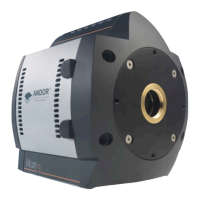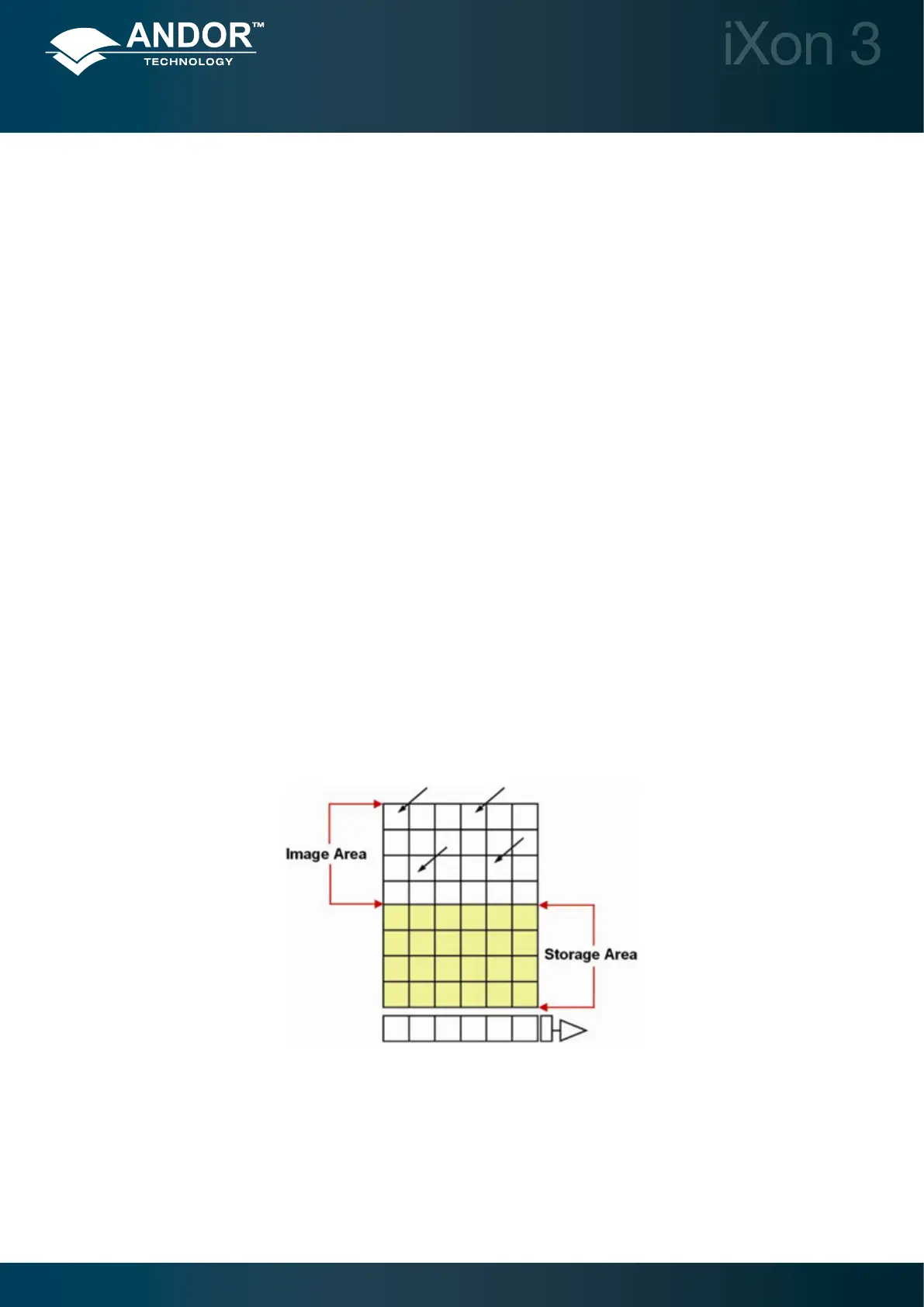Page 71
Appendix
A1.1.9 - Detection Limit
The Detection Limit is a measure of the smallest signal that can be detected in a single readout. The smallest signal
isdenedasthesignalwhoselevelisequaltothenoiseaccompanyingthatsignal,i.e.aSignaltoNoiseratio(S/N)of
unity. Sources of noise are as follows:
• Shotnoiseofthesignalitself
• Shotnoiseofanydarksignal
• Readoutnoise
If the signal is small, we can ignore its shot noise. Furthermore, if a suitably low operating temperature and short
exposure time can be achieved, the lowest detection limit will equal the readout noise.
A1.1.10 - Exposure Time
The Exposure Time is the period during which the CCD collects light prior to readout.
A1.1.11 - Frame Transfer
Frame transfer is a special acquisition mode that is only available if your system contains a Frame Transfer CCD (FT
CCD). An FT CCD differs from a standard CCD in 2 ways. Firstly, it contains 2 areas, of approximately equal size as
follows:
1. The rst area is the Image Area, which is located at the top and farthest from the read-out register. This is the light
sensitive area of the CCD.
2. The second section is the Storage Area, and is located between the Image Area and the Readout
Register. This section is covered by an opaque mask, usually a metal lm, and hence is not sensitive to light
The second way in which a FT CCD differs from a standard CCD is that the Image and Storage areas can be shifted
independently of each other. These differences allow a FT CCD to be operated in a unique mode where one image can
be read out will the next image is being acquired. It also allows a FT CCD to be used in imaging mode without a shutter.
Note: This is only applicable when the camera is running in Accumulate or Kinetic mode.

